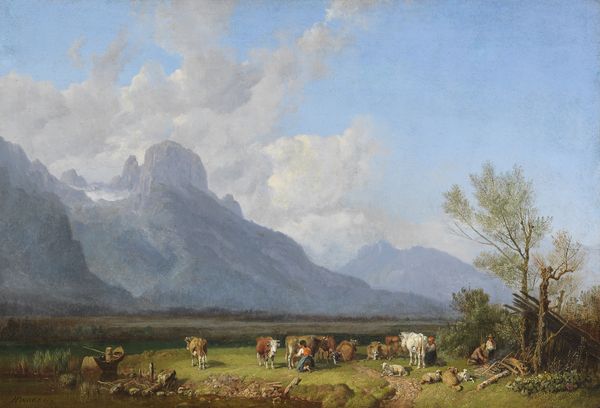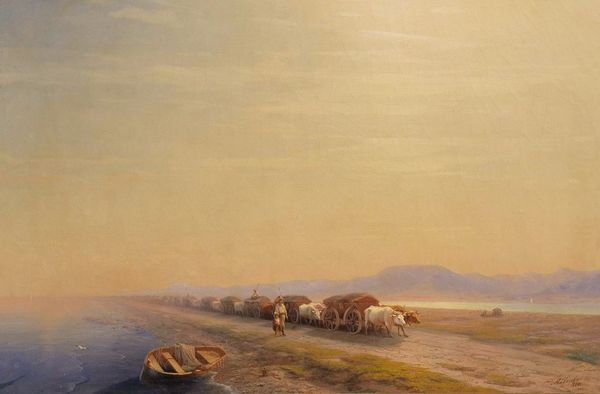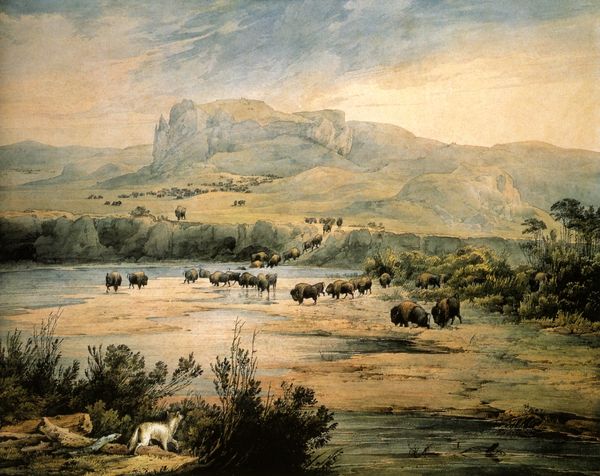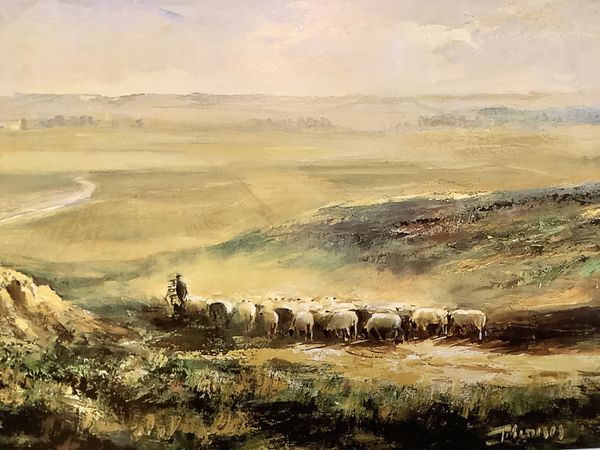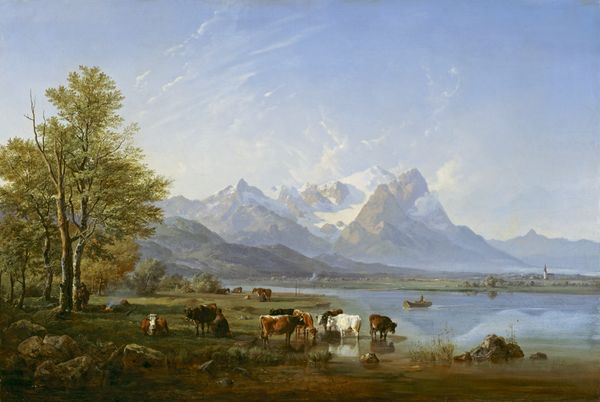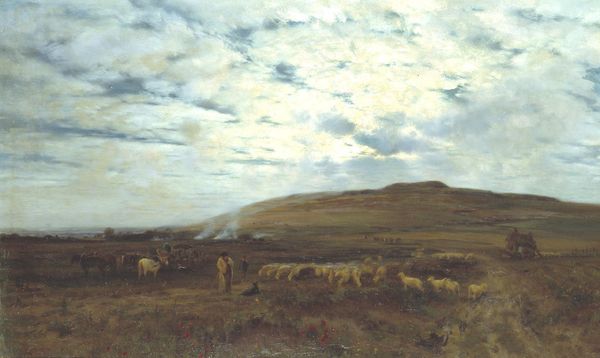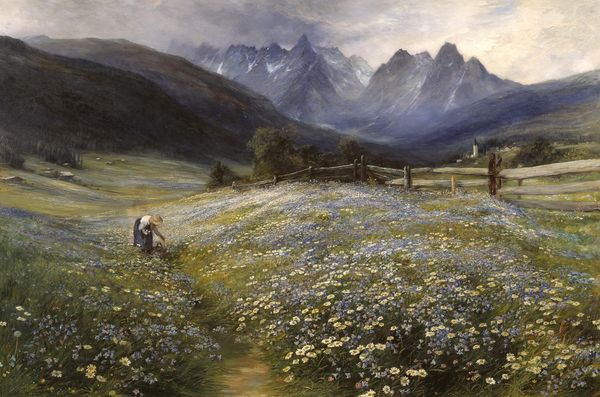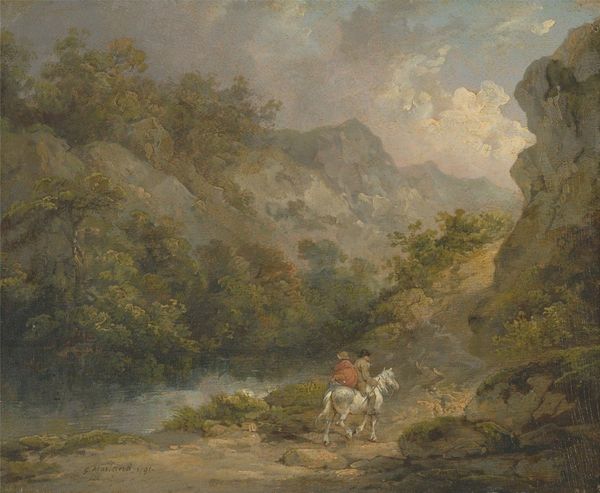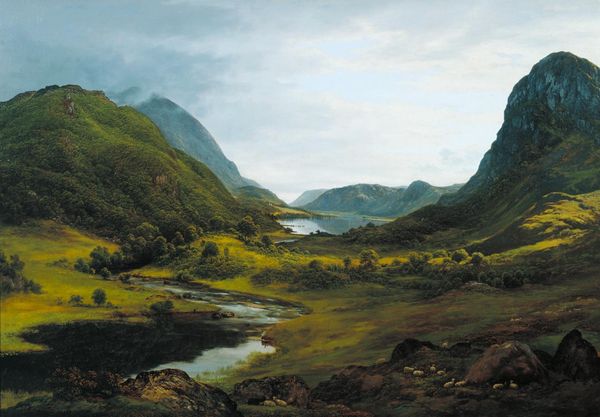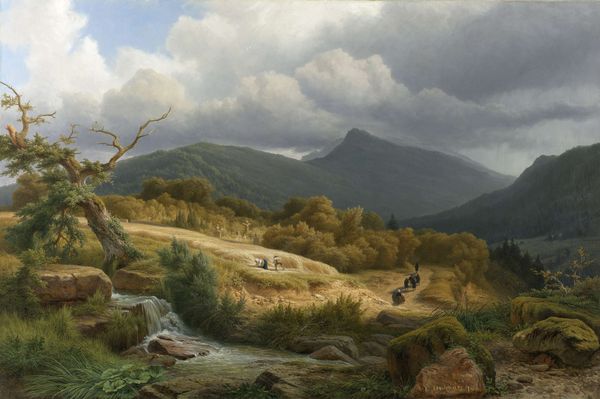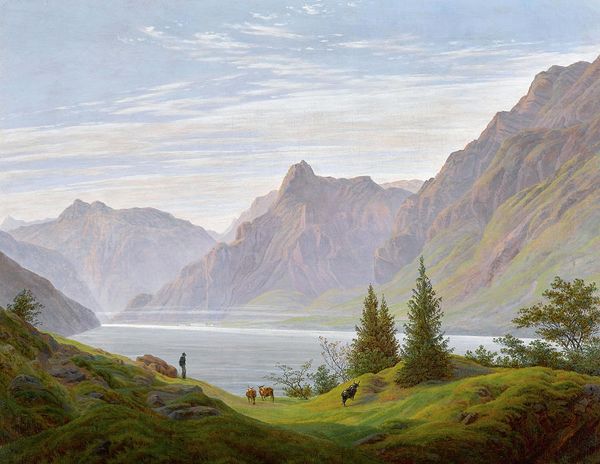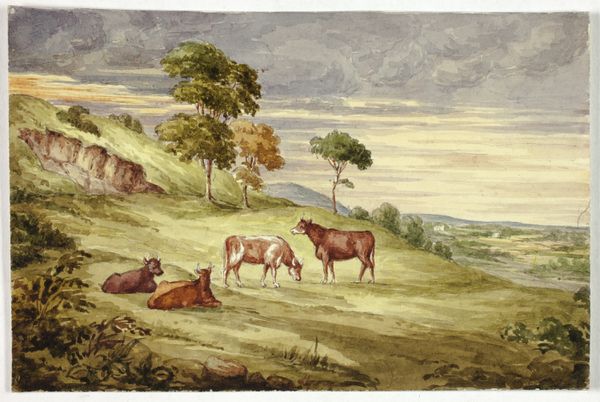
Copyright: Public Domain: Artvee
Curator: Here we have John Linnell’s "The Cloud," an oil on canvas completed in 1863. Linnell was a significant figure in the artistic landscape of 19th-century Britain, known for his detailed and often romanticized landscapes. Editor: It feels…ominous, almost biblical in scale. That dominating cloud formation overshadows the small figures of the shepherd and child, creating a real sense of vulnerability. The muted palette adds to the drama. Curator: The cloud, of course, dominates the composition, but I think it's also about the everyday. Linnell often depicted scenes of rural life. He aimed to capture a kind of enduring beauty in the ordinary, grounding a spiritual essence within pastoral life. How does that intersect, would you say, with vulnerability? Editor: Well, I’m struck by the precarity inherent in agricultural existence, especially in a landscape so directly shaped by the weather. That dramatic sky underscores their dependence on forces beyond their control. And seeing them placed so firmly under that weighty sky provokes that concern in me, given our conversations lately. Curator: That is an insightful read on the intersection of people and land here. What this piece also shows to me, however, is how he navigated the art market. Rural scenes were increasingly popular, especially those with a sense of idealized labor, appealing to an increasingly urban, industrial audience nostalgic for the countryside. Linnell knew his market. Editor: True. And perhaps that idealized labor contributes to that sense of timelessness and universal struggle—or to a certain sanitization of hardship, depending on how critically you want to look at it. He wasn't exactly capturing the realities of poverty, was he? But he certainly plays up this narrative for its audience. Curator: It’s true, Linnell definitely filtered reality through a lens of aesthetic appreciation but without him maybe other later realists like Clausen would not have reached the levels they attained? His artistic lineage definitely needs considering as well! Editor: A valid point! Context and historical placement allow for understanding artistic impact and what narratives each one seeks to play with. Now I feel as though I have better appreciation of what he was setting out to show within society and how we see art and those we are capturing from now as well!
Comments
No comments
Be the first to comment and join the conversation on the ultimate creative platform.
